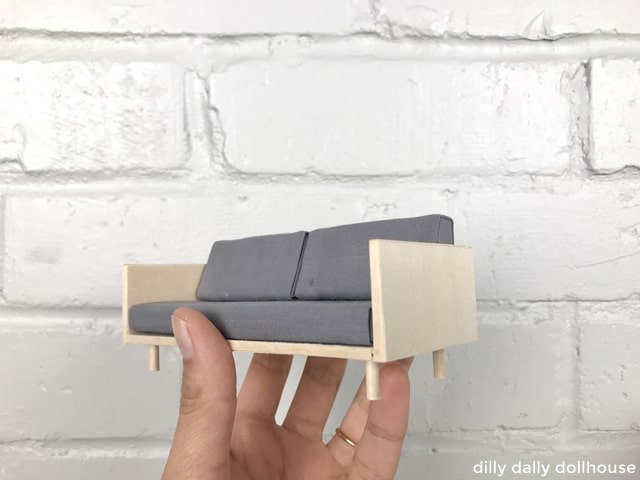
MATERIALS & TOOLS FOR MINIATURE WOOD CASE SOFA
- 1/16″ basswood sheet for the frame
- The sofa frame consists of two layers of 1/16″, to make 1/8″ thickness on each side.
- If you are using materials other than basswood, make the necessary quantities of each shape to achieve 1/8″ thickness on each side.
- 1/8″ round dowel for legs
- Wood glue or craft glue (I use Aleene’s)
- Foam core (the standard 3/16″ thickness)
- Lightweight fabric, about a fat-quarter size (18″ x 22″) should be plenty.
- I use some cheap, plain cotton fabric from my stock.
- Optional: Iron-on veneer to cover the exposed edges
- Cricut Maker or a sharp craft knife plus ruler
- Miter saw or miter shears to cut dowel (make sure the shears are still sharp!)
- Finishing options: stain, primer + paint, varnish or seal
Tips for cutting the trapezoids for the back cushions:
This chart shows you the steps to cut multiple trapezoids efficiently.
At step 3, after you already have one trapezoid, you can use that one to trace and cut the rest of them.
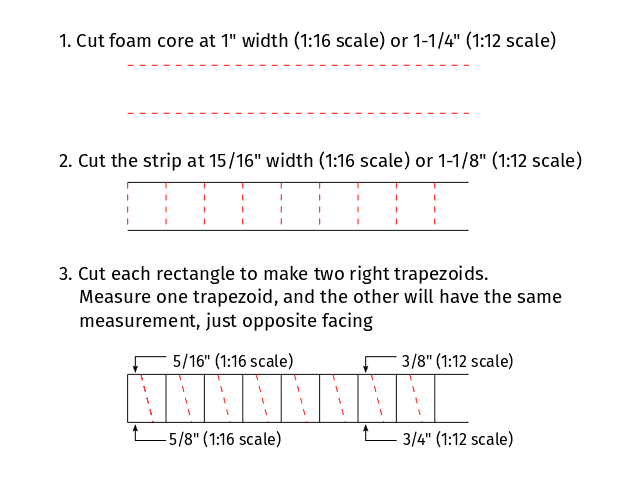
ASSEMBLY OF THE SOFA FRAME
Step 0: Stain and/or varnish first!
If you plan to stain and/or varnish, do it before assembling. Glue spots prevent stain and varnish from being absorbed by the wood, resulting in splotchy, uneven finish.
Painting or sealing can be done after assembly.
Step 1: Layer all the frame pieces
Glue the two layers of each side of the sofa frame: base, back, and two sides. There is a 1/16″ overlap on some edges. This is designed for “corner lap joint” so that there is more surface for the glue to grip on, resulting a stronger overall piece. The red lines on the picture show where the 1/16″ overlaps are.
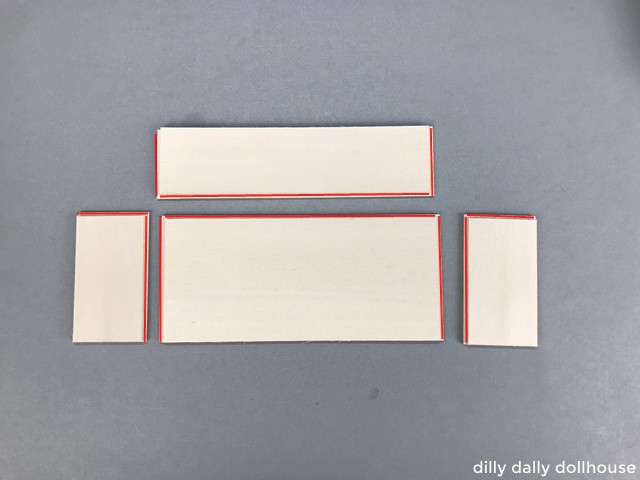
Step 2: Attach the back to the base
The back should cover the edges of the base.
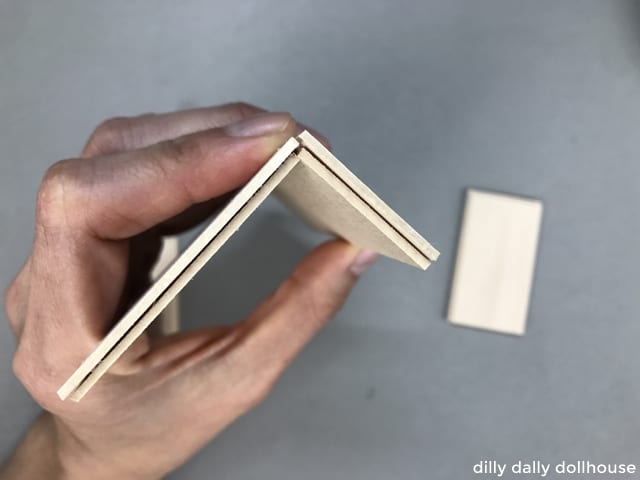
Step 3: Attach the sides to the base and back
The sides should cover the edges of the base and back. The top of the sides and back should all be at the same height. Make sure all corners are square.
(Pardon the visible cutting mat — picture fail! 😳 )
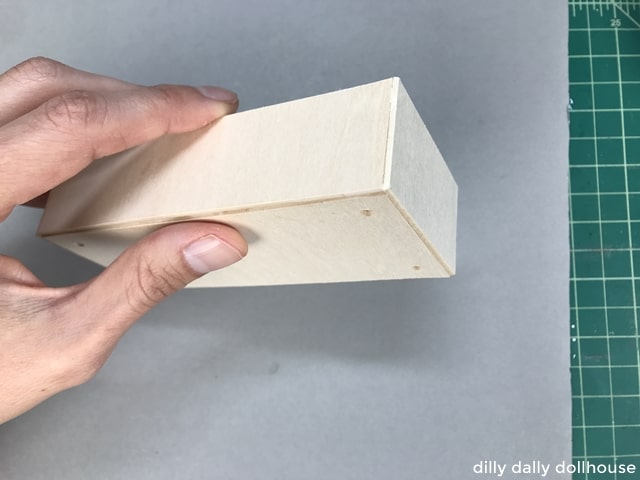
Step 4: Insert the legs
If you skip the leg holes, mark positions of the legs on the underside of the sofa base. Mine are 1/4″ from the edges. Dab a bit of glue at the end of the legs and insert the legs into the holes. Make sure all the legs are straight and even.
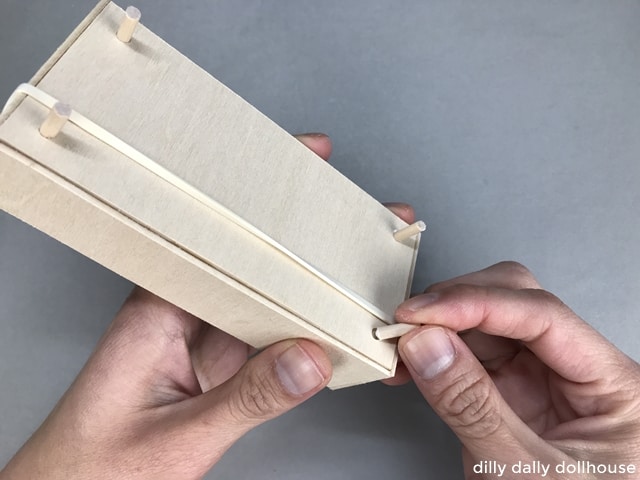
Step 5: (Optional) Cover edges with veneer
If desired, apply 1/8″ strips of iron-on veneer (if using basswood) or cardstock (if using matboard) to cover the edges. This really lifts up the piece to a whole-nother-level.
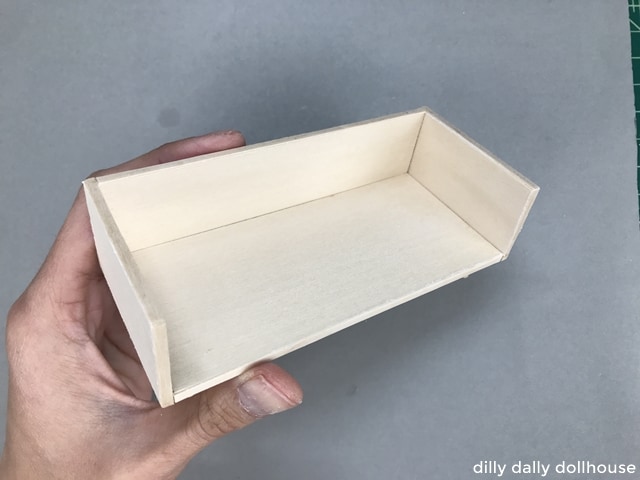
Step 6: (Optional) Prime, paint, and/or seal
I left my frame unfinished since it’s my favorite look, though I may seal it later with Mod Podge.
ASSEMBLY OF THE CUSHIONS
BACK CUSHIONS
Step 1: Prepare the insert
Glue the trapezoids side by side until you have *almost half* the sofa seat width. You want to have a little wiggle room for the bulk of the fabric. The bulkier the fabric, the more wiggle room you will need.
For 1:16 scale with seat width of 4-3/4″, each back cushion should be just under 2-3/8″ each. I recommend 2-1/4″ and adjust from there. Stack as many trapezoid foam core pieces to get this width, and adjust.
For 1:12 scale with seat width of 6-1/2″, each back cushion should be just under 3-1/4″ each. I recommend 3-1/8″ and adjust from there. Stack as many trapezoid foam core pieces to get this width, and adjust.
Make two of these, and dry fit into the frame. Sand off any bumps and unevenness (I skipped this part and the bumps kind of show through).
Step 2: Cover the sides with fabric
(I took these pictures during a practice run, using green fabric)
Apply glue on the foam core. Attach the fabric on the long sides first, then the shorter sides. Snip off excess fabric at the corners, then flatten to the foam core.
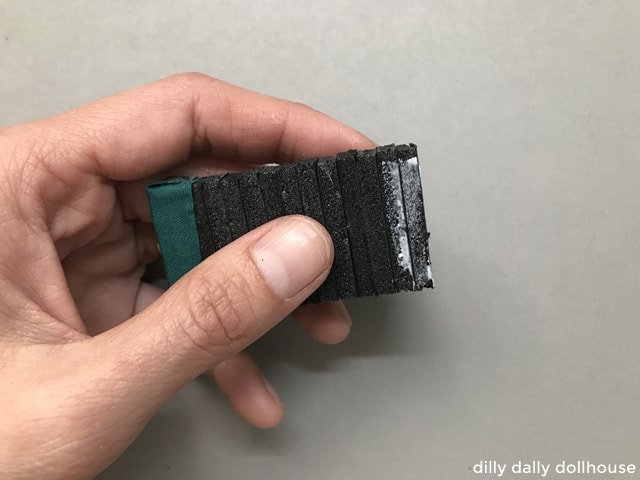
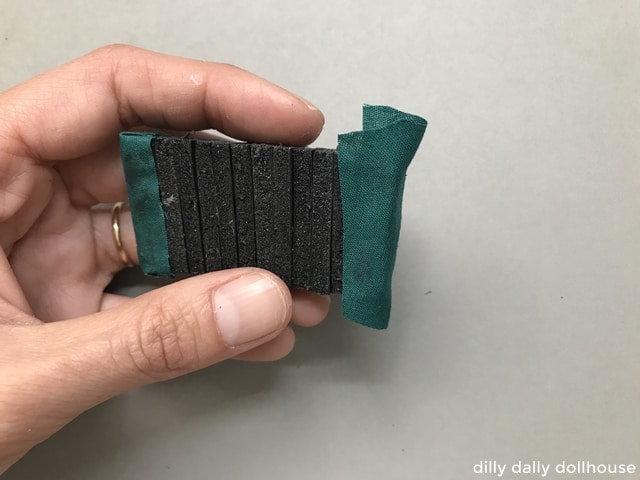
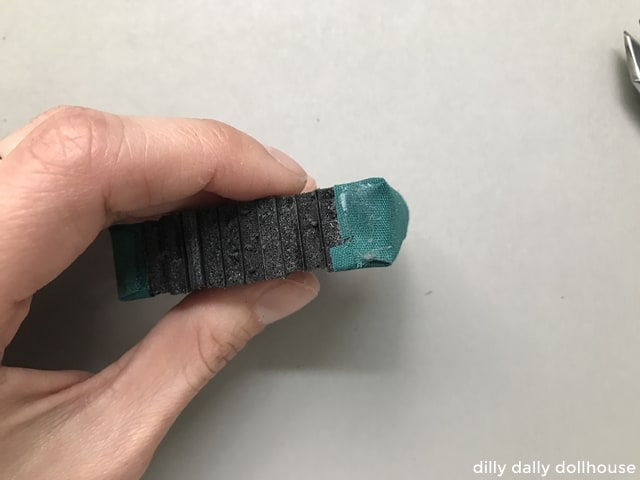
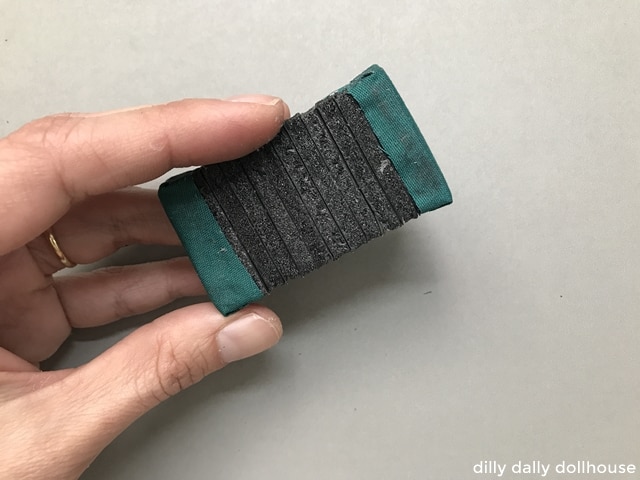
Repeat on the other side, and for the other back cushion
Step 3: Cover the back cushion
Fold the width of the fabric so that the edges meet in the middle. The fabric should span the width of the cushion. Iron the folded fabric to neaten. Then glue the fabric on the foam, making sure the seam ends at the bottom so it won’t be visible.
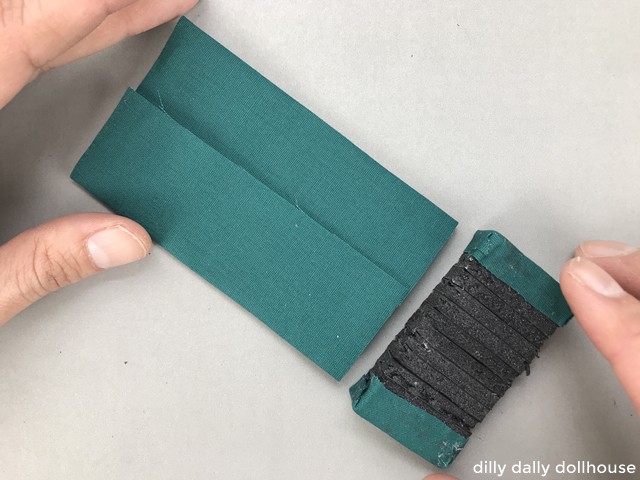
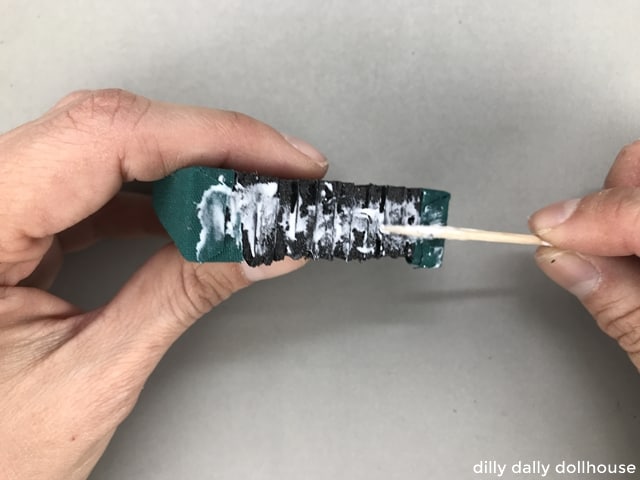
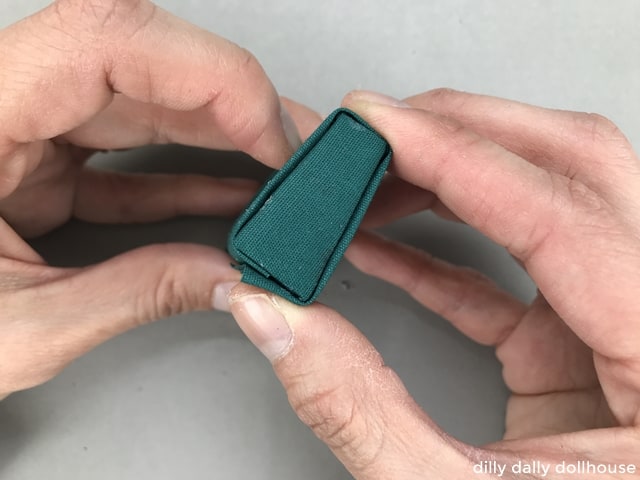
Repeat for the other back cushion.
SEAT CUSHION
Step 1: Prepare the insert
Stack the two foam core rectangles. Dry fit into the frame. Make sure there is about 1/16″ to 1/8″ wiggle room for fabric bulk
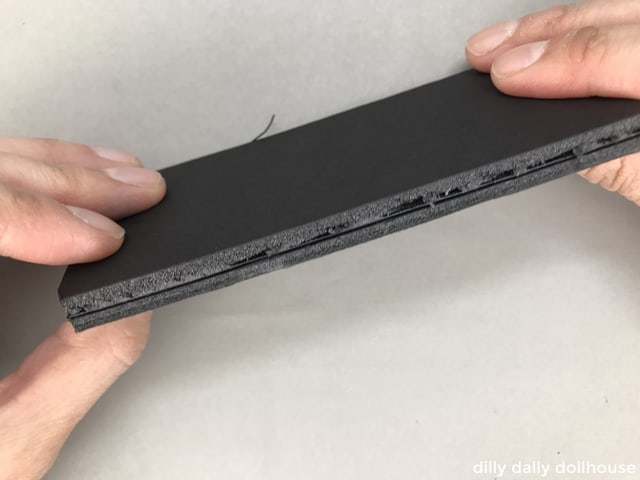
Step 2: Cover the sides with fabric
Following the same method as with the back cushion, wrap the cushion sides with fabric. Apply glue on the foam core. Attach the fabric on the long sides first, then the shorter sides. Snip off excess fabric at the corners, then flatten to the foam core.
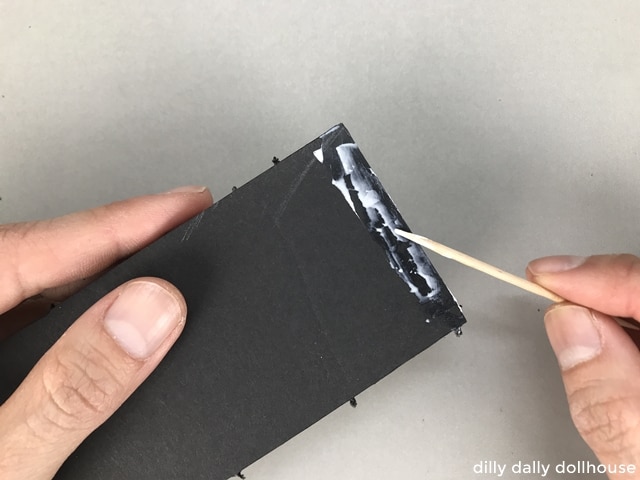
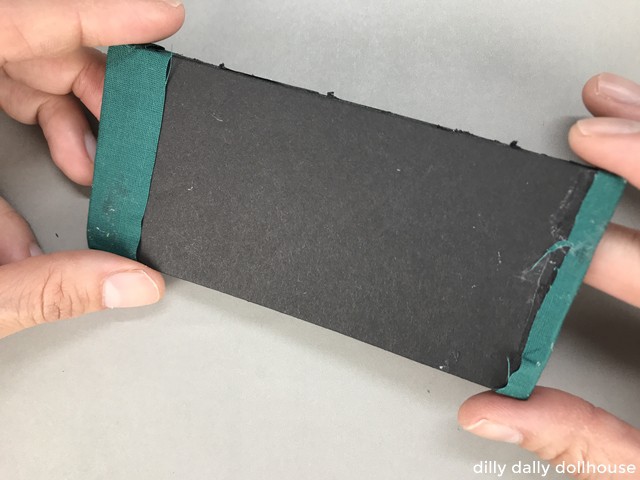
Step 3: Cover the seat cushion
This is also following the same method as the back cushion. Fold the width of the fabric so that the edges meet in the middle. The fabric should span the width of the cushion. Iron the folded fabric to neaten. Then glue the fabric on the foam, making sure the seam ends at the bottom so it won’t be visible.
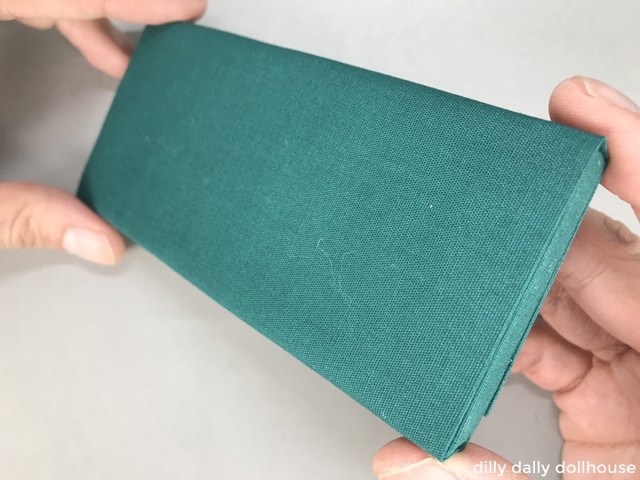
COMPLETE!
My version of the miniature wood case sofa, this one is in 1:16 scale.

Komentar
Posting Komentar